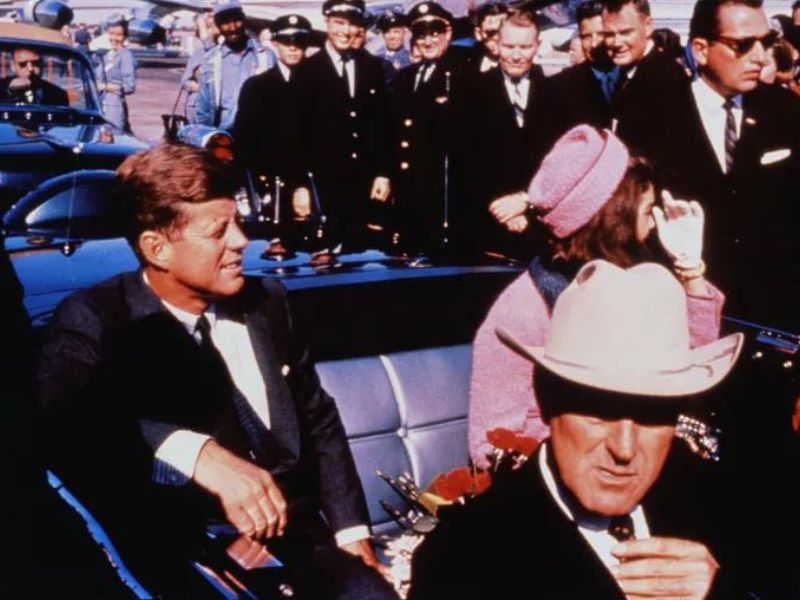Table of Contents
ToggleRare Unseen Footage of John F. Kennedy Assassination Up for Auction
Nearly 61 a long time has passed since the death of President John F. Kennedy, one of the foremost notorious and broadly scrutinized occasions in U.S. history. Whereas incalculable accounts and film have looked to capture the catastrophe, a recently surfaced film offers a new point of view on that game-changing day in Dallas. Shot fair minutes after the shooting, this already inconspicuous film gives a uncommon and chilling see into the quick consequence of the occasion. Before long being auctioned, the film could be an important chronicled artifact that includes a piercing unused measurement of the persevering story of November 22, 1963.
The film was captured by Dale Carpenter Sr., a Texas businessman who had initially set out that day to film Kennedy’s motorcade because it passed along Lemmon Road in Dallas. Trusting to capture a see of the charismatic president, Carpenter arrived as it were to discover that the president’s car had as of now sped by. Still, he oversaw to recording of a few of the parade, including the back of a car carrying Bad Habit President Lyndon B. Johnson and the White House press transport. Uninformed of the greatness of what was almost to happen, Carpenter made a speedy choice to reposition himself along the motorcade course, driving him to Stemmons Expressway.

It was here, fair minutes after the shots were terminated in Dealey Square, that Carpenter captured the criticalness and chaos of the motorcade because it hustled toward Parkland Commemoration Healing Center. His 8-millimeter camera recorded Kennedy’s speeding convertible, a Mystery Benefit operator sprawled on the back, and a hazy picture of Jacqueline Kennedy in her notorious pink Chanel suit. These brief moments have presently gotten to be a bit of history, protected in a novice film reel that remained a family legacy for decades.
When Dale Carpenter passed absent in 1991, the film, which too included a film from his twin sons’ birthday party, was passed down through the family. To begin with, it went to his spouse, Mabel, at that point to his girl, Diana, and at long last to his grandson, James Doors. For many years, the film remained generally obscure, with as it were many people exterior the family ever seeing it.
But afterward this month, this uncommon film will be made accessible to the open for the first time through RR Sell off, a Boston-based sell-off house. The sell-off, planned for September 28, is anticipated to draw critical intrigue, with offering beginning at $5,000. Specialists accept the film may get more than $100,000, given its authentic significance and the irregularity of such assassination-related pictures.
Gerald Posner, creator of Case Closed:
Lee Harvey Oswald and the Death of J.F.K., has depicted the film as an effective coda or addendum to the more celebrated Zapruder film. Whereas the Zapruder film broadly captured the minutes of the death itself, Carpenter’s film offers a calming see of the quick consequence, showing the motorcade hustling down Stemmons Expressway toward the clinic. It’s a brief, but piercing, visual update of the catastrophe and perplexity that was taken after the shooting.
As it were a modest bunch of people exterior the Carpenter family have had the opportunity to see the film, counting Posner, Clint Slope, the Mystery Benefit operator who climbed onto the back of Kennedy’s car after the primary shot, and Stamp S. Zaid, a legal counselor and death master. All three have vouched for the realness of the film, noticing its significance in reporting the chaotic minutes after the assassination.
Slope, in particular, includes an individual association with the occasions captured on film. On that day, he had sprinted from the car behind Kennedy’s and jumped onto the back of the president’s Lincoln Mainland in an exertion to secure the primary woman. Within the film, Slope is seen clinging to the car, his foot on the trunk, because it races down the expressway at 80 miles per hour. Concurring to Slope, by this point, Kennedy was as now lying over the back situated of the car, his head resting in his wife’s lap.
The film, even though brief lasting as it were almost 40 seconds has colossal historical value. As RR Auction’s posting notes, it is the as it were known film of the president’s car on the turnpike because it sped toward Parkland Dedication Clinic, where Kennedy was afterward articulated dead at 1 p.m. The film gives a visual record of the frantic surge to spare the president’s life and offers a modern point of view on the catastrophe that has captivated students of history and the Open for decades.

In the arrangement for the sell-off, RR Sell-off has discharged a few clips and still pictures from the film, even though the complete arrangement has not been made freely accessible. Planned buyers can orchestrate viewings ahead of the sell-off, and intrigued is anticipated to be tall, given the irregularity of such artifacts.
Whereas the foremost famous film of the Kennedy death remains the Zapruder film, which broadly captured the minute the deadly shot struck the president, Carpenter’s film offers an interesting and complementary viewpoint. It captures the human feelings of the moment the confusion, the direness, and the significant sadness—as those within the motorcade hurried to Parkland Clinic with the trust of sparing the president.
The deal of this uncommon film will undoubtedly draw consideration from history specialists, collectors, and those captivated by the Kennedy death. It serves as a stark update of the enduring effect of that awful day in Dallas and the progressing journey to get each detail of what happened. Because it goes beneath the pound afterward this month, Carpenter’s film stands as a momentous piece of American history, a preview of one of the darkest days of the nation’s past.
Also Read:

